On the night of 8th / 9th June 1944 the crew of this 467 Squadron aircraft took off from Scampton airfield at 23.01hrs to bomb railway facilities at Rennes, France. All appears to have gone well over the target area but on their return to Lincolnshire the weather was very bad, thick low cloud prevented them landing at Scampton. All 467 Squadron crews received the order to divert to land at Catfoss where the weather must briefly have appeared better. In actual fact the visibility appears to have been the same at Catfoss, the cloud was recorded as being as low as between 200-300 feet. A number of different squadrons sent crews to East Yorkshire and they struggled to locate the airfields. Halifax LW140 (of 102 Squadron) crashed near Seaton while trying to find Catfoss, Halifax LW364 (of 51 Squadron) crashed near Holme on the Wolds while diverting to Driffield and Halifax MZ659 (of 102 Squadron) ran out of fuel trying to find somewhere to land so the crew baled out near Carnaby. In theory Lancaster LM440 joined the landing circuit of Catfoss but whether they had actually joined the circuit knowing exactly where Catfoss was could be open to debate. At 03.57hrs Lancaster LM440 flew through tree tops west of Skirlaugh and started to break up in the air until it crashed four hundred yards further on and disintegrating near Woodhouse Farm. Sadly four members of the crew were killed instantly, two others received fatal injuries and died in the hours that followed. Only the wireless operator survived and he escaped with relatively minor injuries. The majority of other 467 Squadron crews circuited the general area of Catfoss for 3/4 hour, one found Carnaby while two then landed at Lissett but most opted to return to Lincolnshire before their fuel ran out and landed at various No.5 Group airfields.
Halifax LW140 had crashed just two minutes earlier a few miles away and it was thought that LW140 had crashed while taking evasive action to avoid another aircraft, Lancaster LM440 is suggested as being that aircraft.
Pilot - P/O Herbert Alexander Watson Parkinson RAAF (422259), aged 20, of Castle Hill, New South Wales, Australia. Buried Harrogate Stonefall Cemetery, Yorkshire (B/F/12). Died of injuries.
Flight Engineer - Sgt Thomas Collin RAFVR (1822863), aged 21, of Chirnside. Buried Chirnside Cemetery, Berwickshire. Died of injuries.
Navigator - F/Sgt Sidney William Merrin RAAF (426132), aged 22, of Toowoomba, Queensland, Australia. Buried Harrogate Stonefall Cemetery, Yorkshire (B/F/9).
Bomb Aimer - F/Sgt Richard Graham Cottew RAAF (426547), aged 21, of Royston Park, South Australia. Buried Harrogate Stonefall Cemetery, Yorkshire (B/F/11).
Wireless Operator / Air Gunner - Sgt Stanley Robert Ward RAFVR (1812253), aged 20, of Stoke Newington, London. Buried Harrogate Stonefall Cemetery, Yorkshire (B/F/10).
Air Gunner - Sgt Melrose Vance RAFVR (1823455), aged 19, of Biggar. Buried Biggar Cemetery, Lanarkshire.
Wireless Operator / Air Gunner - F/Sgt Nisson Mossenson RAAF (427532). Slightly injured.
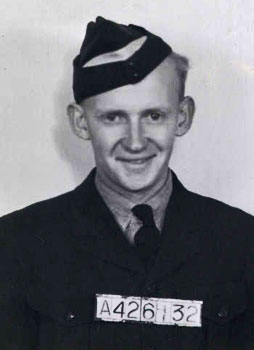

Sidney Merrin was born on 8th November 1921 at Maryborough, Queensland, Australia and was the son of Thomas and Anna Merrin. As a young man he worked as a clerk but was also studying to be an accountant when he enlisted for RAAF service. He enlisted in Brisbane on 23rd May 1942 and after training in Canada he was awarded his navigator's flying badge on 25th June 1943. Once in the UK later in 1943 he trained at 9 (O)AFU, 27 OTU and 1661 HCU before posting to 467 Squadron on 11th May 1944.

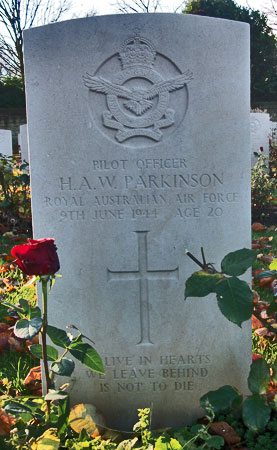
Herbert Parkinson was born on 24th March 1924 at Katanning, Western Australia and was the son of Archie Watson Parkinson and Estella Parkinson. He enlisted for RAAF service in Sydney on 25th April 1942 and after basic training in Australia undertook pilot training in Canada where he gained his Wings on 2nd April 1943. He arrived in the UK in Summer 1943 and trained at 15 (P)AFU, 27 OTU and 1661 HCU before posting to 467 Squadron on 11th May 1944 with his crew having received a commission on 6th April 1944. He died of his injuries in Beverley a few hours after the crash on 9th June 1944.
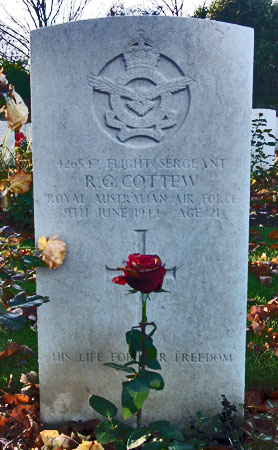
Richard Cottew was born on 25th February 1923 at Auckland, New Zealand and was the son of Leslie Graham and Rene Scotter Hadley Cottew. The family later moved to Royston Park, South Australia but he enlisted for RAAF service in Brisbane, Queensland, Australia on 1st January 1942. His service file has yet to be digitised.

Stanley Ward's gravestone at Harrogate Stonefall Cemetery.
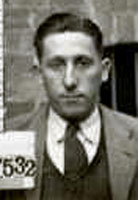
Nisson Mossenson was born on 27th September 1922 in Perth, Western Australia. He enlisted for RAAF service on 19th JUly 1942 and following initial training he was awarded his wireless operator / air gunner's flying badge in April 1943. Once in the UK in Summer 1943 he trained at 3 (O)AFU, 27 OTU and 1661 HCU before posting to 467 Squadron on 11th May 1944 with the rest of this crew. Following recovery from his injuries at Rauceby hospital he was posted back to 467 Squadron on 2nd August 1944 but then on to 9 Squadron on 30th August 1944. He remained at 9 Squadron until January 1945 then was taken off operational flying, having completed his Tour (28 operational flights under his belt). He returned to Australia and would later marry Doris Roberts. He died in 1992 and the Nissy Mossenson Park in Perth was named in his honour.
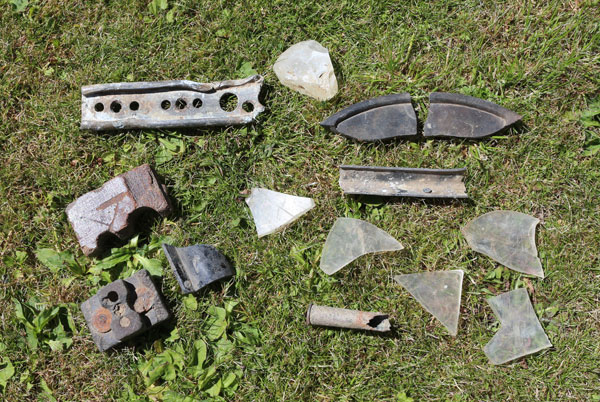
Historians Albert Pritchard, Eric Barton and Ken Reast were invited along after East Yorkshire aviation expert Rodney Robinson had sought permission from the landowner and they located small fragments of Lancaster LM440 on the surface of the field to confirm the location in October 1998.